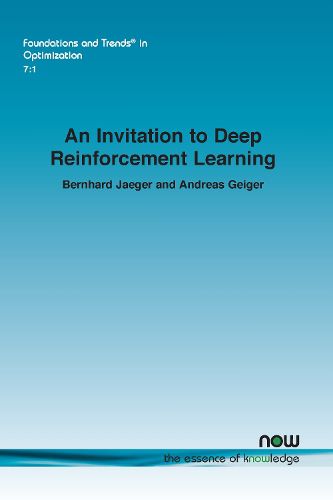Readings Newsletter
Become a Readings Member to make your shopping experience even easier.
Sign in or sign up for free!
You’re not far away from qualifying for FREE standard shipping within Australia
You’ve qualified for FREE standard shipping within Australia
The cart is loading…






This title is printed to order. This book may have been self-published. If so, we cannot guarantee the quality of the content. In the main most books will have gone through the editing process however some may not. We therefore suggest that you be aware of this before ordering this book. If in doubt check either the author or publisher’s details as we are unable to accept any returns unless they are faulty. Please contact us if you have any questions.
Training a deep neural network to maximize a target objective has become the standard recipe for successful machine learning over the last decade. These networks can be optimized with supervised learning if the target objective is differentiable. However, this is not the case for many interesting problems. Common objectives like intersection over union (IoU) and bilingual evaluation understudy (BLEU) scores or rewards cannot be optimized with supervised learning. A common workaround is to define differentiable surrogate losses, leading to suboptimal solutions with respect to the actual objective. Reinforcement learning (RL) has emerged as a promising alternative for optimizing deep neural networks to maximize non-differentiable objectives in recent years. Examples include aligning large language models via human feedback, code generation, object detection, or control problems. This makes RL techniques relevant to the larger machine learning audience. The subject is, however, time-intensive to approach due to the large range of methods, as well as the often highly theoretical presentation.
This monograph takes an alternative approach that is different from classic RL textbooks. Rather than focusing on tabular problems, RL as a generalization of supervised learning is introduced, which is first applied to non-differentiable objectives and later to temporal problems. Assuming only basic knowledge of supervised learning, the reader will be able to understand state-of-the-art deep RL algorithms like proximal policy optimization (PPO) after reading this monograph.
$9.00 standard shipping within Australia
FREE standard shipping within Australia for orders over $100.00
Express & International shipping calculated at checkout
This title is printed to order. This book may have been self-published. If so, we cannot guarantee the quality of the content. In the main most books will have gone through the editing process however some may not. We therefore suggest that you be aware of this before ordering this book. If in doubt check either the author or publisher’s details as we are unable to accept any returns unless they are faulty. Please contact us if you have any questions.
Training a deep neural network to maximize a target objective has become the standard recipe for successful machine learning over the last decade. These networks can be optimized with supervised learning if the target objective is differentiable. However, this is not the case for many interesting problems. Common objectives like intersection over union (IoU) and bilingual evaluation understudy (BLEU) scores or rewards cannot be optimized with supervised learning. A common workaround is to define differentiable surrogate losses, leading to suboptimal solutions with respect to the actual objective. Reinforcement learning (RL) has emerged as a promising alternative for optimizing deep neural networks to maximize non-differentiable objectives in recent years. Examples include aligning large language models via human feedback, code generation, object detection, or control problems. This makes RL techniques relevant to the larger machine learning audience. The subject is, however, time-intensive to approach due to the large range of methods, as well as the often highly theoretical presentation.
This monograph takes an alternative approach that is different from classic RL textbooks. Rather than focusing on tabular problems, RL as a generalization of supervised learning is introduced, which is first applied to non-differentiable objectives and later to temporal problems. Assuming only basic knowledge of supervised learning, the reader will be able to understand state-of-the-art deep RL algorithms like proximal policy optimization (PPO) after reading this monograph.